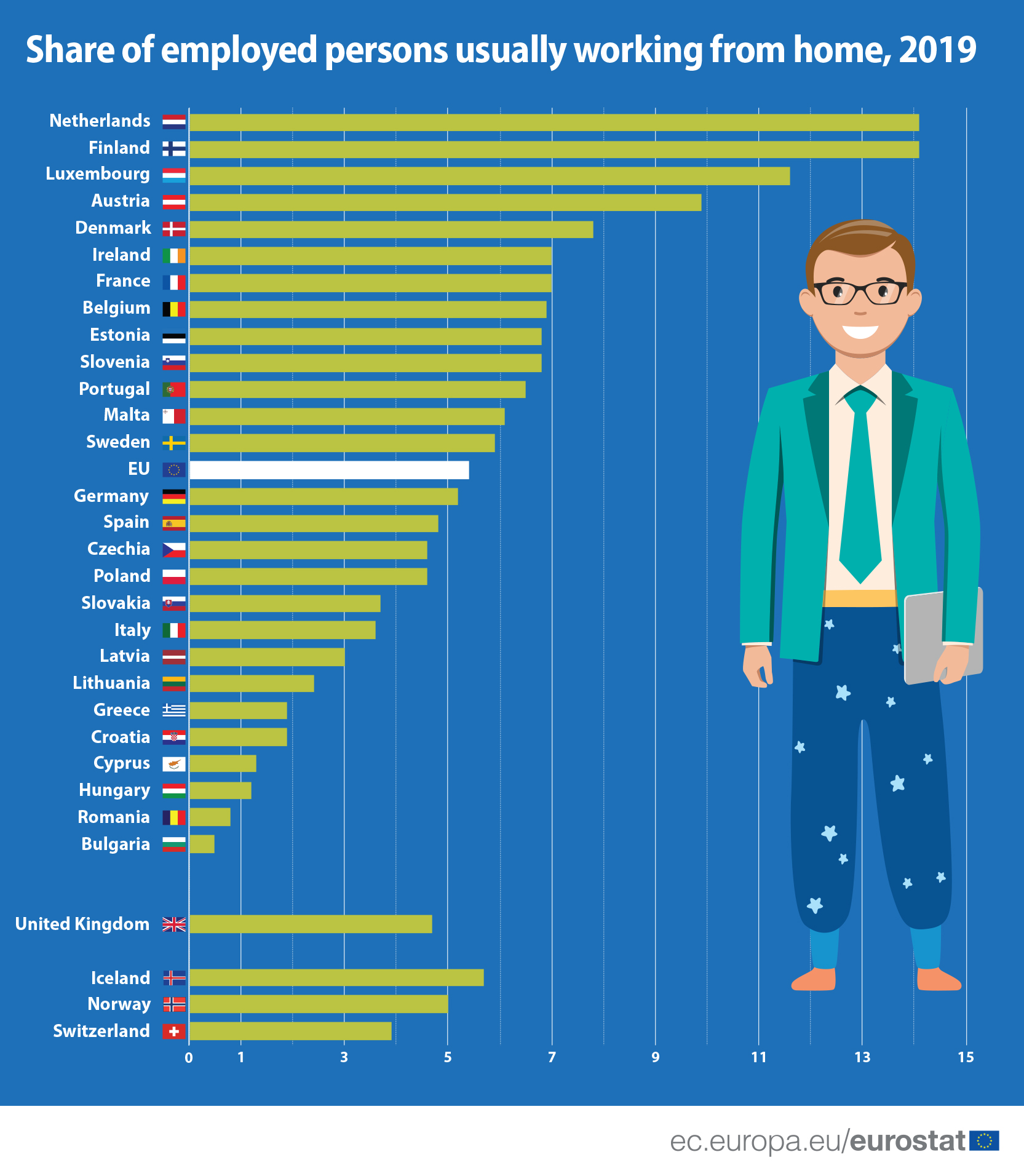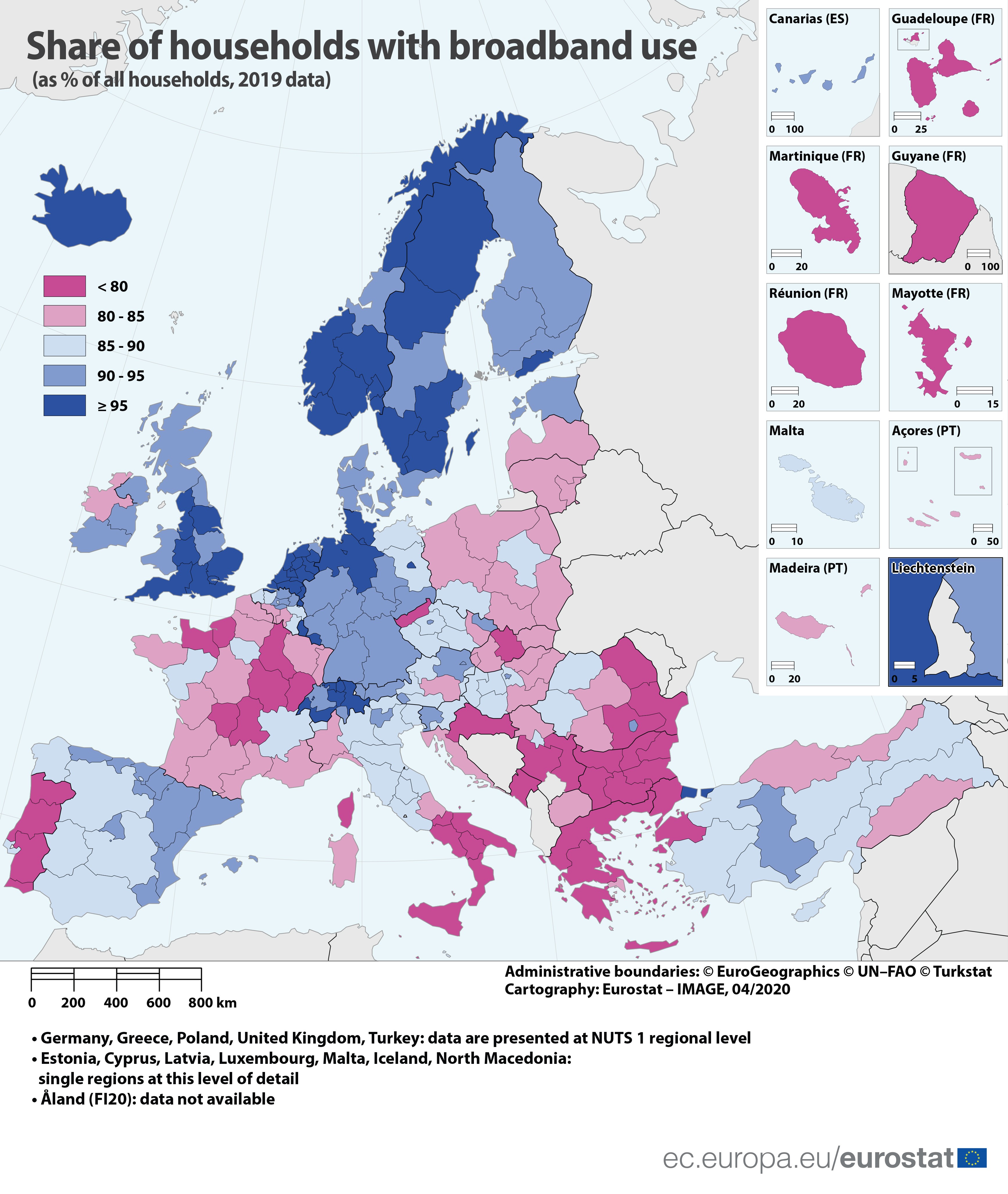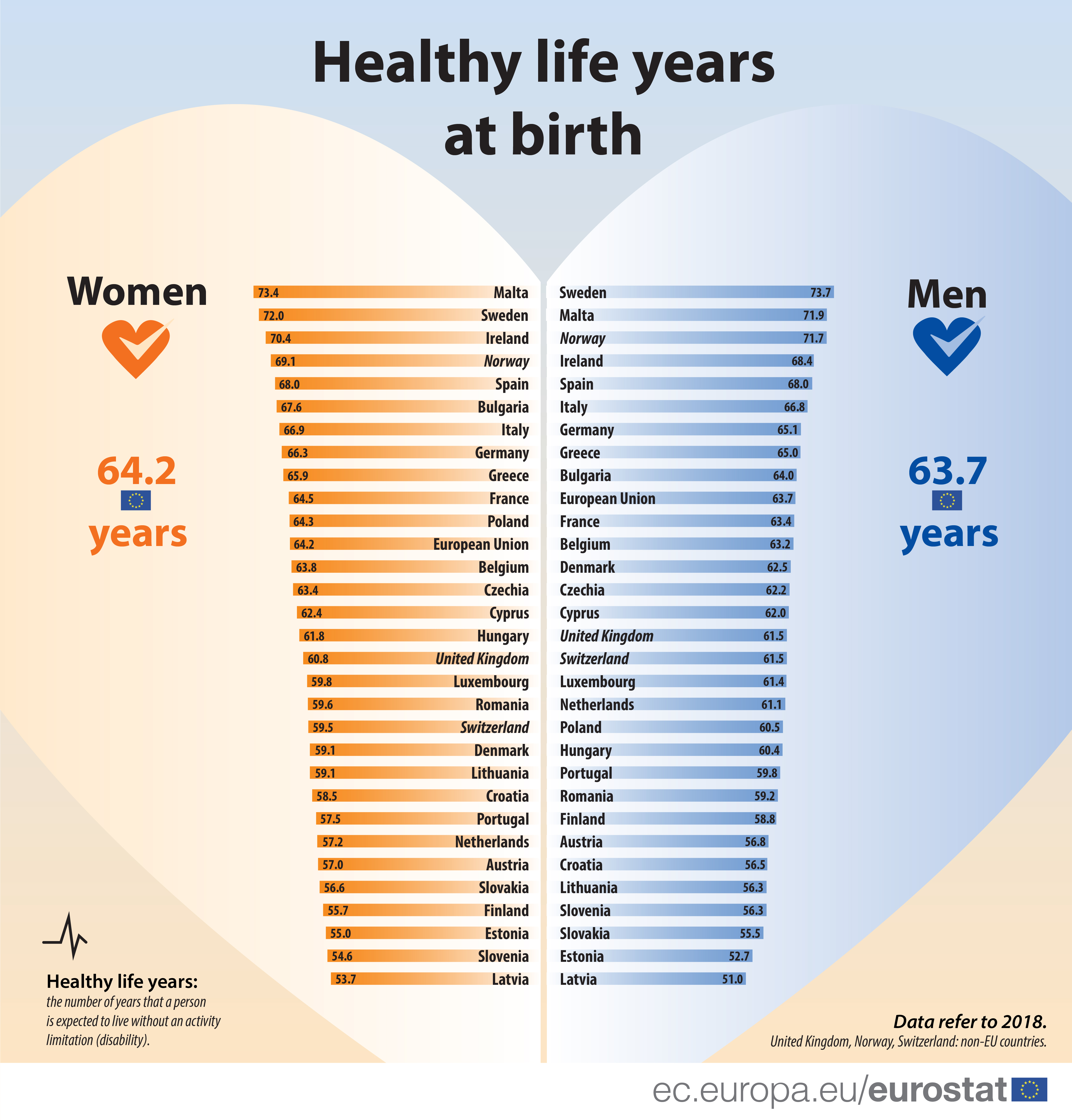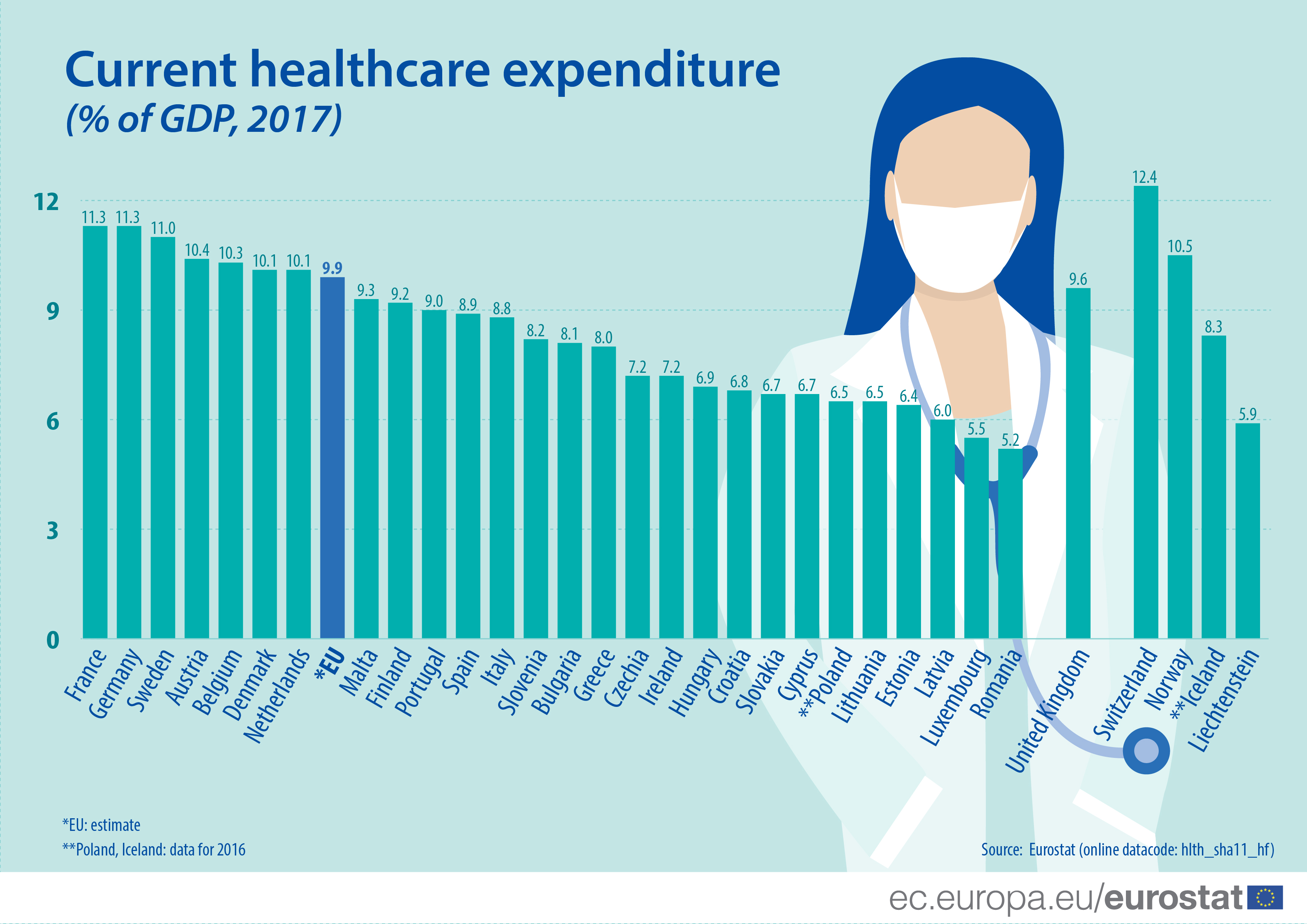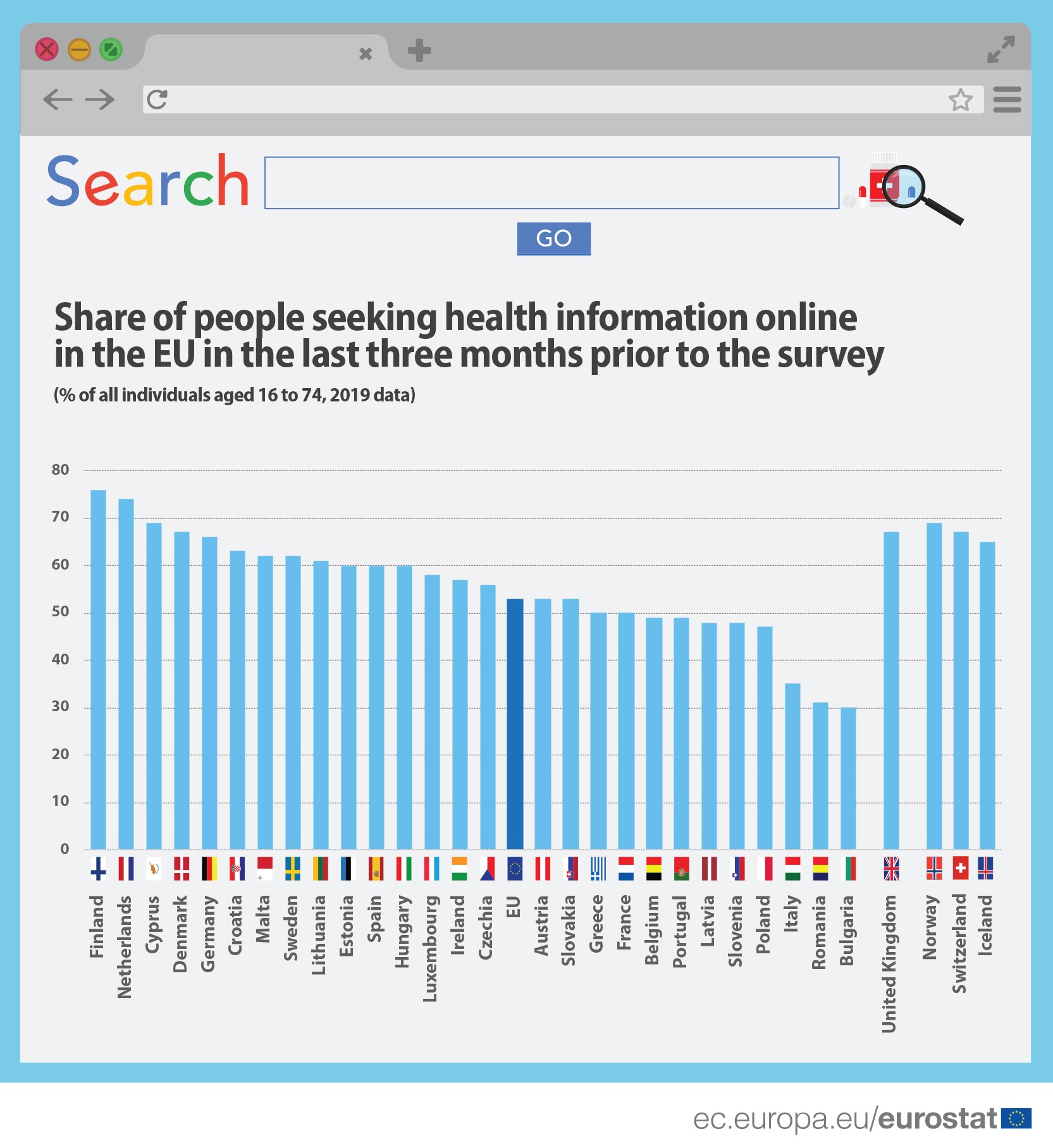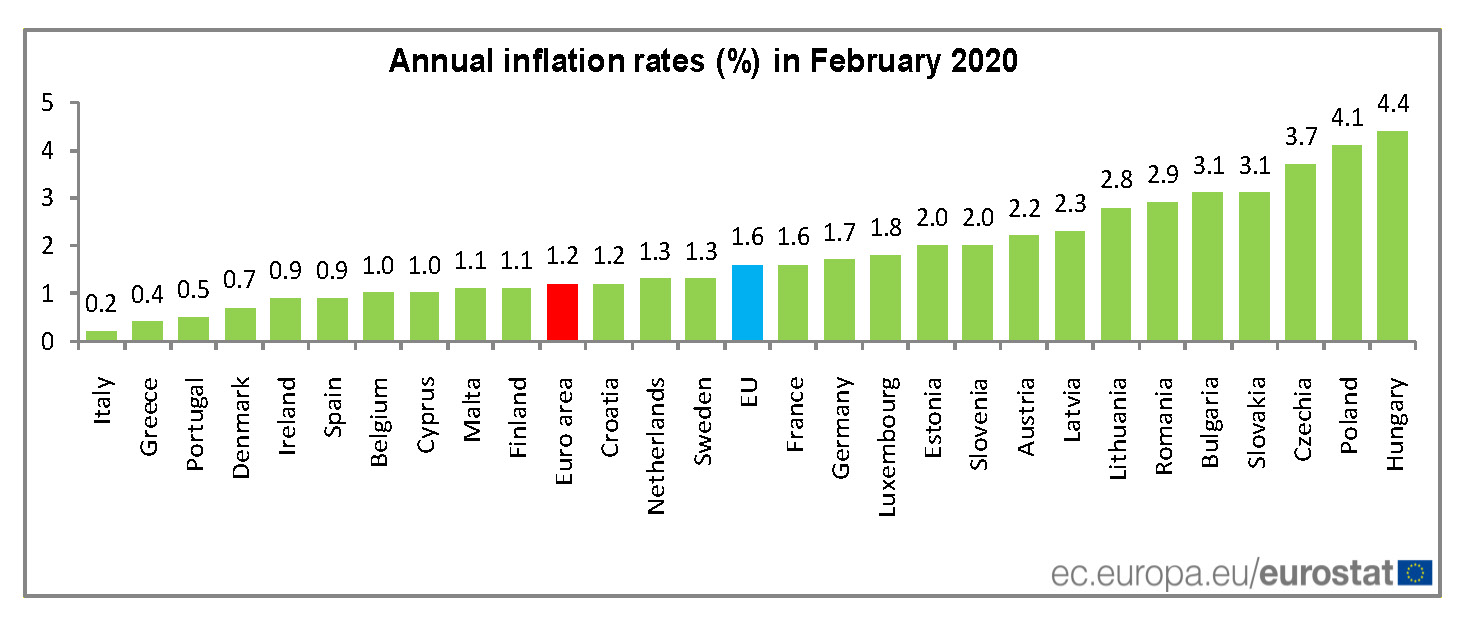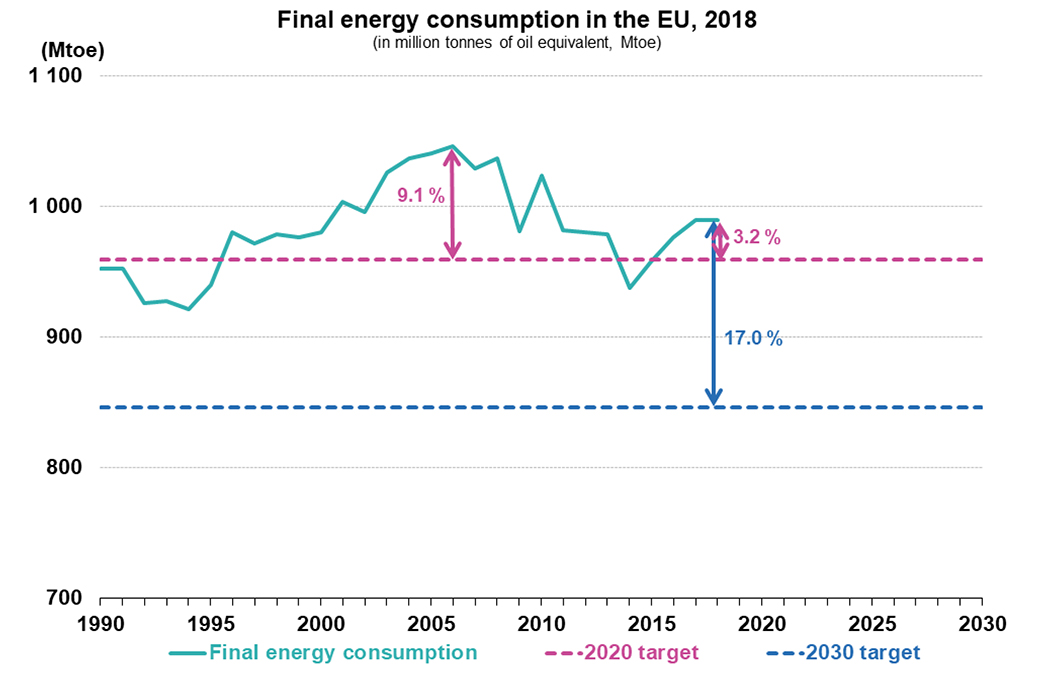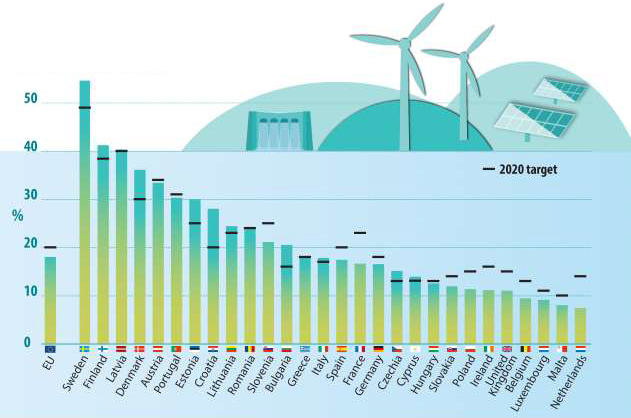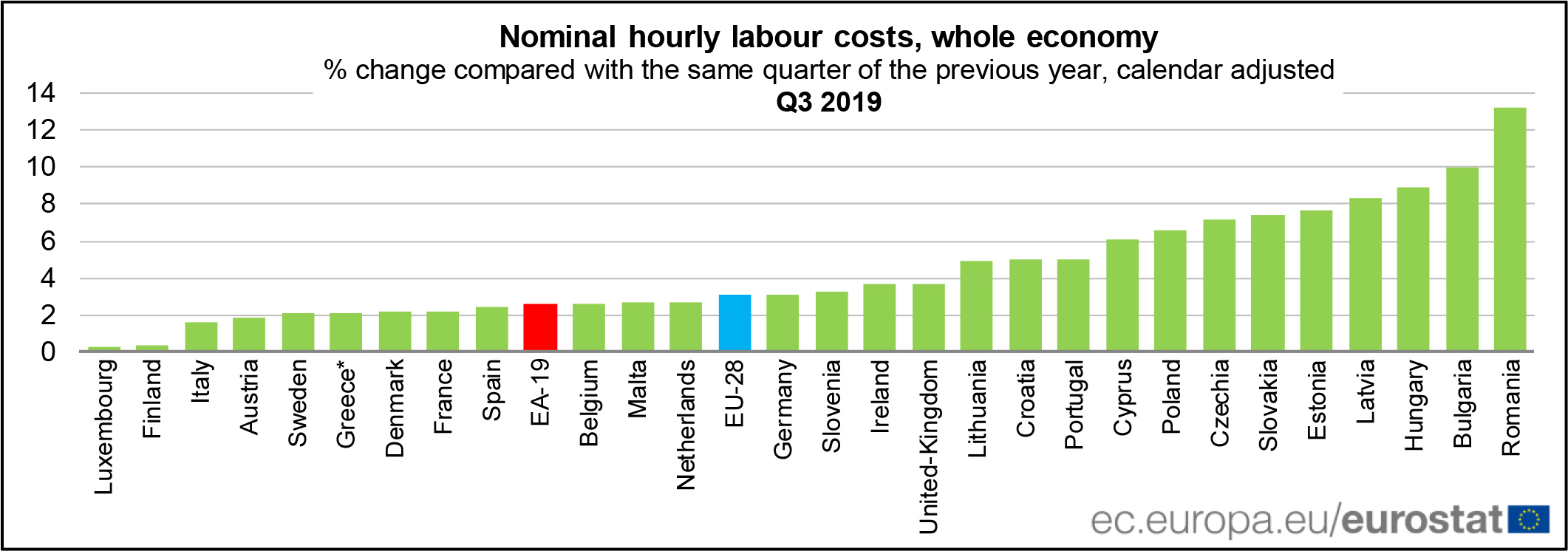The social distancing measures that have recently been introduced due to the coronavirus pandemic, have forced many people to work from home; for many of them this will be the first time that they
Statistics
Broadband has become increasingly important over recent weeks because of the COVID-19 pandemic and confinement measures introduced by European Union (EU) Member States.
In 2018, the number of years a person is expected to continue to live in a healthy condition in the European Union (EU) was estimated to be 64.2 years for women and 63.7 years for men.
On average in the EU, it is estimated that healthcare expenditure amounted to 9.9% of GDP in 2017.
In the last three months prior to the 2019 survey on the use of ICT in households and by individuals, one in two EU citizens (53%) aged 16-74 reported that they sought online health information rel
The euro area annual inflation rate was 1.2% in February 2020, down from 1.4% in January. A year earlier, the rate was 1.5%.
Directive 2012/27/EU aimed to improve energy efficiency by 20% by 2020 compared to 1990 levels and included a requirement for all EU countries to set national energy efficiency targets to achieve t
Twelve Member States have reached a share equal to or above their 2020 target.
Hourly labour costs rose by 2.6% in the euro area and by 3.1% in the EU28 in the third quarter of 2019, compared with the same quarter of the previous year.
The value of gross domestic product (GDP) per inhabitant in purchasing power standard (PPS) of EU regions generally fell in 2009 because of the crisis.
